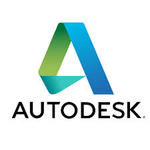Description

Revit

Adobe Creative Cloud
Comprehensive Overview: Revit vs Adobe Creative Cloud
Revit and Adobe Creative Cloud are both software suites that cater to professionals, but they serve very different functions and markets. Here's a comprehensive overview of each:
Revit
a) Primary Functions and Target Markets:
- Primary Functions: Revit is a Building Information Modeling (BIM) software developed by Autodesk. It allows architects, engineers, and construction professionals to design buildings and structures in a 3D environment while supporting 2D drafting and scheduling. Key functionalities include modeling, visualization, collaboration, and construction documentation.
- Target Markets: The primary markets for Revit are architecture, engineering, and construction (AEC) industries. It's used by architects, structural engineers, MEP (mechanical, electrical, and plumbing) engineers, designers, and construction professionals.
b) Market Share and User Base:
- Revit holds a significant share of the BIM market due to its comprehensive suite of features tailored for the AEC sector. While exact user base numbers fluctuate, Autodesk remains a leading provider in this space, with Revit widely adopted in North America, Europe, and Asia-Pacific regions.
c) Key Differentiating Factors:
- BIM Capabilities: Revit is specifically designed for BIM, providing robust tools for creating and managing building data.
- Collaboration and Interoperability: Revit supports multi-disciplinary collaboration with features that allow for real-time coordination among teams, minimizing errors and enhancing workflow integration across various stages of design and construction.
- Parametric Components: Revit’s parametric modeling capabilities allow users to design with both geometry and non-geometric attributes that define real-world behavior.
Adobe Creative Cloud
a) Primary Functions and Target Markets:
- Primary Functions: Adobe Creative Cloud is a collection of software tools used primarily for graphic design, video editing, web development, photography, and various creative applications. Key applications include Photoshop, Illustrator, Premiere Pro, After Effects, InDesign, and more.
- Target Markets: Creative professionals such as graphic designers, photographers, video editors, web developers, and marketing professionals are the primary users. It is widely used in industries like advertising, media, entertainment, publishing, and education.
b) Market Share and User Base:
- Adobe Creative Cloud has a dominant position in the creative software market and boasts millions of subscribers worldwide. It’s a standard in many industries due to its wide range of integrated applications and cloud-based accessibility.
c) Key Differentiating Factors:
- Comprehensive Creativity Suite: Adobe Creative Cloud offers an extensive collection of creative tools that integrate seamlessly, allowing for a versatile workflow across different creative disciplines.
- Cloud Services and Updates: Adobe provides continuous updates and cloud services that allow for file syncing, storage, collaboration, and sharing.
- Industry Standard: Tools like Photoshop and Illustrator have become industry standards due to their advanced features and widespread adoption across creative industries.
Comparison and Differentiation:
- Functionality and Purpose: Revit is focused on BIM and architectural design, making it essential for the AEC industry, while Adobe Creative Cloud caters to a broader range of creative domains, including digital media and graphic design.
- Market Approach: Revit targets technical design and construction professionals, aiming for precision and collaboration, while Adobe CC has a wider appeal in creative fields, emphasizing artistic and visual content creation.
- User Experience and Interface: Revit’s interface caters to professionals needing detailed and structured design capabilities, whereas Adobe’s interfaces prioritize creative freedom and design aesthetics.
- Subscription Model: Both employ a subscription-based model, but each provides specialized tools that serve their distinct professional needs and creative processes.
In summary, while both Revit and Adobe Creative Cloud are leaders in their respective fields, they serve vastly different functions and audiences, with Revit concentrating on BIM for AEC professionals and Adobe Creative Cloud focusing on an expansive array of creative tools for diverse digital content creation.
Contact Info

Year founded :
Not Available
+1 307-461-5767
Not Available
United States
http://www.linkedin.com/company/revit-agency-io

Year founded :
Not Available
Not Available
Not Available
Not Available
Not Available
Feature Similarity Breakdown: Revit, Adobe Creative Cloud
Revit and Adobe Creative Cloud are both powerful software suites used by professionals in design and construction fields, but they serve somewhat different purposes. Here's a breakdown of their feature similarities and differences:
a) Core Features in Common
-
Design and Visualization: Both Revit and Adobe Creative Cloud offer tools for creating visual content. Revit is geared towards 3D modeling and architectural design, while Adobe's products (like Photoshop and Illustrator) focus on graphic design and photo editing.
-
Collaboration and Sharing: Both platforms support collaboration, though in different contexts. Revit includes project-sharing capabilities essential for architectural and construction projects, while Adobe Creative Cloud allows file sharing and collaboration across its suite of graphic design tools.
-
Asset Libraries and Templates: Both offer extensive libraries. Revit has component libraries for building design, while Adobe Creative Cloud provides creative assets, fonts, and stock images.
-
Cross-Platform Availability: Users of either Revit or Adobe Creative Cloud can access their projects across different devices, although Adobe offers broader OS support, including mobile.
b) User Interface Comparison
-
Revit: The interface is highly specialized for architecture, engineering, and construction tasks. It uses a ribbon-based UI similar to other Autodesk products, emphasizing 3D modeling, with toolbars and panels dedicated to architectural elements, like walls, doors, and structural components.
-
Adobe Creative Cloud: This suite includes multiple applications, each with its UI suited to various creative tasks. Photoshop, Illustrator, and InDesign, for example, have floating panels and customizable workspaces that offer flexibility to cater to design requirements. The interface is generally more visually-oriented and adaptable to different types of graphic work.
c) Unique Features
-
Revit:
- BIM (Building Information Modeling): Revit’s standout feature is its BIM capabilities, allowing users to create an intelligent 3D model that integrates structural information, making it invaluable for planning and managing building data.
- Parametric Components: These allow for detailed and flexible design elements that automatically adjust based on changes in parameters.
- MEP and Structural Engineering Tools: Revit has specific features for mechanical, electrical, and plumbing (MEP) and structural engineering, offering comprehensive tools for those areas.
-
Adobe Creative Cloud:
- Wide Range of Creative Tools: Adobe Creative Cloud includes a vast array of applications not only for design but also for video editing (Premiere Pro), animation (After Effects), and web development (Dreamweaver).
- Creative Cloud Libraries: This feature allows users to save and synchronize assets across all Creative Cloud applications easily.
- Adobe Sensei: Utilizes AI and machine learning to improve productivity and creativity, offering features like auto-tagging images or intelligent cropping.
In conclusion, while Revit and Adobe Creative Cloud offer some overlapping features in design and collaboration, they are tailored to different professional needs: Revit is deeply entrenched in the AEC industry, providing specialized tools for building design, while Adobe Creative Cloud excels in providing versatile creative tools for a variety of media and industries.
Features

Not Available

Not Available
Best Fit Use Cases: Revit, Adobe Creative Cloud
Revit and Adobe Creative Cloud are powerful tools that serve different purposes and excel in diverse use cases across industry verticals.
a) Revit
Best Fit Use Cases:
-
Architecture Firms: Revit is indispensable for architectural design. It provides powerful tools for 3D modeling, drafting, and rendering, making it ideal for designing complex structures and buildings.
-
Engineering and Construction Companies: Revit supports MEP (mechanical, electrical, and plumbing) and structural engineering workflows, helping engineers create accurate models and simulations for large-scale infrastructure projects.
-
Real Estate Development: Revit can be invaluable for real estate developers by offering detailed visualizations and simulations of proposed developments, helping stakeholders make informed decisions.
-
Interior Design Firms: Revit aids interior designers in creating detailed interior layouts and visualizations, streamlining the design process and improving communication with clients.
Industry Vertical and Company Size:
- Verticals: Architecture, Engineering, Construction, and Real Estate.
- Company Size: Typically used by medium to large firms due to its robust capabilities and the collaborative nature of its tools, but also accessible to smaller design firms with an emphasis on growth and complex projects.
b) Adobe Creative Cloud
Best Fit Use Cases:
-
Graphic Design Studios: Adobe Creative Cloud offers tools like Photoshop, Illustrator, and InDesign, which are essential for creating graphics, layouts, and digital paintings.
-
Marketing and Advertising Agencies: These businesses utilize tools like Adobe Photoshop, Premiere Pro, and After Effects to create and edit digital content, from imagery to videos and animations.
-
Media Production Companies: Ideal for video editing and post-production workflows, especially with Premiere Pro and After Effects for video and special effects work.
-
Web and App Development: Tools like Adobe XD offer interactive design and prototyping capabilities, making it suitable for UX/UI designers working on web and mobile applications.
-
Photography Studios: Professional photographers use Lightroom and Photoshop for photo editing and manipulation, enhancing and organizing their photographic work.
Industry Vertical and Company Size:
- Verticals: Creative, Marketing, Media, Entertainment, and Technology.
- Company Size: Suitable for freelancers to large enterprises. The subscription model and range of tools make it flexible for individual creators, small design studios, and large marketing departments at corporations.
c) How They Cater to Different Industry Verticals or Company Sizes
-
Revit: Primarily focused on architecture, engineering, and construction industries. It’s built for firms that need advanced BIM (Building Information Modeling) capabilities. Its collaborative tools make it ideal for companies handling complex, multi-disciplinary projects. Revit's scalability is suited to accommodate large-scale projects but can also be budgeted for smaller firms through Autodesk's licensing programs.
-
Adobe Creative Cloud: Offers a vast suite of products that cater to a wide range of creative professions. Its cloud-based subscription service allows for scalability and flexibility, appealing to both individual creators and large companies. Adobe Creative Cloud’s wide-ranging applications, such as Photoshop and Illustrator, target various creative verticals beyond those specifically architectural, including advertising, publishing, and film production.
Overall, both Revit and Adobe Creative Cloud serve niche markets excellently, offering tailored tools and functionalities that cater to the specific needs of their respective industry verticals and company sizes.
Pricing

Pricing Not Available

Pricing Not Available
Metrics History
Metrics History
Comparing teamSize across companies
Conclusion & Final Verdict: Revit vs Adobe Creative Cloud
To provide a fair and comprehensive conclusion on Revit and Adobe Creative Cloud, it's important to consider their respective strengths, weaknesses, and specific use cases. These two software packages serve different purposes and are often used in conjunction with one another in various industries.
a) Best Overall Value
Conclusion: Adobe Creative Cloud offers the best overall value in terms of versatility and accessibility, particularly for creative professionals. While Revit is indispensable for architectural design and BIM (Building Information Modeling) tasks, Adobe Creative Cloud's broad suite of applications is more adaptable to a wider range of tasks, making it a more versatile option for freelancers and creative agencies.
b) Pros and Cons
Revit:
- Pros:
- Industry Standard for Architecture and BIM: Revit is an essential tool for professionals in architecture, engineering, and construction, known for its robust BIM functionalities.
- Advanced Design and Visualization: Offers powerful tools for 3D modeling and design visualization, streamlining the design-to-construction workflow.
- Collaboration and Data Integration: Facilitates multidisciplinary collaboration with integrated data environments, benefiting large projects and teams.
- Cons:
- Steep Learning Curve: Requires significant training for new users, especially those without a background in architectural design.
- Cost: Revit's licensing can be expensive, which might not be justifiable for smaller firms or individual users.
- Specific Use Case: Its applicability is largely limited to the AEC (Architecture, Engineering, and Construction) industry.
Adobe Creative Cloud:
-
Pros:
- Comprehensive Suite of Tools: Offers a wide array of applications for graphic design, video editing, web development, photography, and more.
- Constant Updates and Cloud Integration: Provides regular updates and cloud storage, ensuring users have access to the latest features and their work on any device.
- Community and Support: A vast user community and extensive support resources make it easier to learn and troubleshoot.
-
Cons:
- Subscription Model: The cost can add up over time, potentially becoming expensive for ongoing access.
- Complexity for New Users: The sheer number of applications can be overwhelming, requiring users to spend time learning various tools.
- Performance Requirements: Demands a significant amount of computer processing power for optimal performance, especially for video editing and 3D work.
c) Recommendations for Users
-
For Architects and Engineers: If your work is primarily in the AEC industry and heavily involves BIM processes, Revit is the clear choice. It is specifically designed to meet the industry's demanding requirements and offers unparalleled functionality in this space.
-
For Creatives and Designers: Choose Adobe Creative Cloud if your work spans multiple creative disciplines like graphic design, video editing, and digital art. The flexibility and range of applications make it a more adaptable toolset for creative professionals.
-
For Firms and Teams: Consider your project needs. If projects primarily demand architectural and construction insights and design intricacies, invest in Revit. For marketing, branding, content creation, and varied design work, go with Adobe Creative Cloud.
-
Budget and Resource Considerations: Small firms or individual freelancers should weigh the cost implications of both platforms. Adobe Creative Cloud might be more cost-effective for those requiring multiple creative applications, whereas Revit is more for those with specific architectural requirements.
Ultimately, selecting between Revit and Adobe Creative Cloud should be based on your professional needs, project requirements, and budget considerations. Each has its strengths and benefits in its respective domain. For many in creative fields, Adobe Creative Cloud provides unmatched versatility, while Revit remains indispensable for AEC professionals.
Add to compare
Add similar companies



